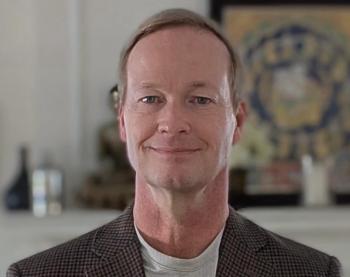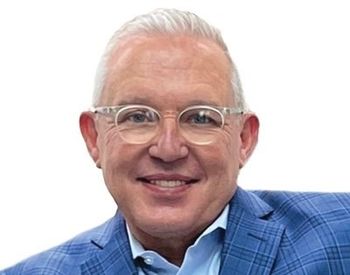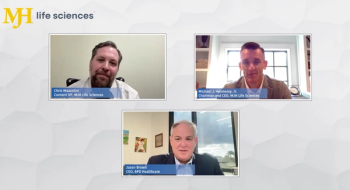
Can Outside Disruptors Increase Patient Engagement?
Health systems are leaving a lot of value on the table when it comes to engaging their patients. What tools will improve the patient experience, and keep patients invested in improving their health?
Increasing patient engagement means streamlining health system efficiencies, improving patient outcomes, reducing readmissions, and facilitating payment models.
But how do we get there? Is healthcare ready to take a hard look in the mirror and investigate ways to change patient behavior, or is that task better suited for outside disruptors?
Can Outside Disruptors Increase Patient Engagement?
A Healthcare Analytics News® Peer Exchange®
Segment 2/13
Kevin R. Campbell, MD: Let me ask you something about using virtual reality to train students in an operating room to do heart catheterization or pacemaker implantation or heart surgery, not so much to move their hands but to handle adversity. In other words, when things go wrong, how do you internalize fear and anxiety and make yourself a better caregiver to your patients? I think virtual reality may be an option. What about using technology—and I’ll toss this to the group—for patient education? If you’re an empowered patient, you’re going to be a better patient.
John Nosta, BA: How many times have we or caregivers handed that 45-year-old statin patient a tear sheet on what the side effects are? Myalgia, all that stuff, in whatever category. In my experience, it’s always written for a fifth grader. The pharmaceutical standard is fifth-grade education.
Well, no fifth grader takes that medication, number 1. Number 2, sometimes it’s a PhD Stanford engineer who’s taking it, but sometimes it’s a mom in Alabama. We can probably customize this information using technology to 4 or 5 prototypes and make it so much more resonant. The application of technology in something as simple as communicating with our patients is intrinsically disruptive.
Geeta Nayyar, MD, MBA: We’re actually doing this in our group, and one of the things that excites me in the market today is Allscripts’ acquisition of HealthGrid. There are patient engagement solutions we’re using in our practice. We’re texting patients, “You’re turning 40 years old, happy birthday. Let me tell you a little bit about a mammogram and why you should come in and get one with Dr. Nayyar.” It’s that simple.
John Nosta, BA: Let me just chime on that because you said something very interesting. You said, “happy birthday.”
Geeta Nayyar, MD, MBA: Happy birthday.
John Nosta, BA: God forbid the pharmaceutical industry engages in a dialogue. Social media is 80% social and 20% media. But the pharmaceutical industry seems to focus on the ads, the preapproved legal communication. I think engaging in the dialogue fosters that disruptive communication process.
Geeta Nayyar, MD, MBA: Plus, the patients want to hear from the doctor, right? A lot of my doctors are sending postcards, “Happy Birthday, make sure you come in.” Is anyone getting those postcards? No, right? Where do I get it? My phone. I answer my text messages. Right now, by the way, you can text your veterinarian, your dentist—why not your doctor?
Jane Sarasohn-Kahn, MA, MHSA: Remember, the medium is the message for the individual patient, for the n of 1. I still get postcards. I like postcards. I still make cards because I love doing that, but I’m absolutely online as well. I think with technology, you can tailor to the n of 1, whether it’s a text message for millennials, a postcard for the mom in Alabama you talked about, or some sort of secure email message for the Princeton educator.
John Nosta, BA: The medium is the message, but we can also customize the message. If I’m talking to an electrical engineer, I’m going to use bar charts. I might even throw in a p-value.
Geeta Nayyar, MD, MBA: But that’s where the EMR companies come in, right? That’s where these legacy health systems come in and have an opportunity to disrupt with smaller startups that connect the dots the way they can, right? Allscripts has the EMR data. They know how old you are. They know whether you like to go skydiving. They know if you’ve been in Hawaii, and maybe they will send you a postcard, Jane. But they can text you. They can automate all of these things that John mentioned, which includes remembering to take that prescription.
Kevin R. Campbell, MD: But the issue is that Allscripts is not singling them out, and all EMR companies are for-profit entities. They’re not going to do anything disruptive that doesn’t put money in their executives’ pockets.
Geeta Nayyar, MD, MBA: But they have the data.
Kevin R. Campbell, MD: But they’re not necessarily going to use it in a way that we want them to.
Geeta Nayyar, MD, MBA: The pharmaceutical industry is no different; the providers are no different; the EMR companies are no different.
Kevin R. Campbell, MD: We were promised universal electronic medical records, that interoperability and sharing of information, but each one of those EMRs have built themselves out separately in their own silos.
Geeta Nayyar, MD, MBA: Correct, and that’s where the consumer comes in. That’s where the consumer has to be the one who connects the dots, gets their information, and then shares it with Dr. Nayyar, Dr. Campbell, or Dr. Nosta. I don’t need the EMR company, I’ve got my own data here.
Colin Hung, BaSC: But there has to be a business case for that.
John Nosta, BA: That’s the point, yes.
Colin Hung, BaSC: As much as I would want that as a patient, I look at it as who has the incentive, the financial incentive, to enable that interoperability. There isn’t a clear one today.
John Nosta, BA: Right.
Colin Hung, BaSC: I think we need to create that. I don’t know how we do it.
John Nosta, BA: It needs to be legislative.
Colin Hung, BaSC: That’s the only way it’s going to happen in the United States.
Geeta Nayyar, MD, MBA: I actually think it’s simple. I think it’s up to the consumer. The only thing that can be legislated is the portal. You’re supposed to go to the portal. We know no one’s going to the portal. We are texting, right? We are actually texting people their information now. We’re texting them lab results, we’re texting them their history, and you are the only one who has the incentive to share that as the consumer. I don’t think that there can be legislation that will fix this. It is about connecting the patient and the doctor and making it easy to get your data. That’s it.
Colin Hung, BaSC: One more comment on that, and then I’ll let you go. I would say that only comes about, the consumer demand for it will only come about, when there’s actual competition. I think that’s the key. Why would someone do that today, offer texting, offer videos, or offer customized n-of-1 communications? It’s because I want to track more patients than my competitor. The problem today is that I don’t think competition is that diverse. With certain doctors, I can go from A to B. But for most, I just go to A. I have no real choice. So, there’s no incentive for me to demand, “Look, I’m only going to go to this one because they have texting, and this one does not.” Until that comes about, I don’t think we’re going to see as much consumer demand.
Kevin R. Campbell, MD: I do think she’s right. Consumers have to drive this; physicians have to drive this as advocates. But right now, in the United States, Epic is the big player. Epic is, in my opinion, one of the worst interfaces out there. It’s not done for the patient. It’s not done for the doctor. Do you know what it’s done for? It’s designed to capture the maximum amount of billing possible for the hospital system.
Jane Sarasohn-Kahn, MA, MHSA: That’s why as payment changes market-to-market, we don’t have nationwide value-based payment yet: bundled payment, pay-for-performance. In certain markets we do, if you look in San Francisco, Los Angeles, parts of North Carolina, or Miami. I’m in Philadelphia, and with 6 medical schools, you better believe we’re going to be one of the last places where that happens. But we have seen where payment is aligned, physicians are cottoning on to these new technologies and patients have begun—because I track this stuff—to change doctors based on access to a portal that makes sense or email. That’s why we see the concierge movement amongst people who can afford it. But it’s the payment.
Kevin R. Campbell, MD: Let me throw a question out that’s related to this. You just hit the nail on the head. Hospital systems are motivated by payments and customers and that sort of stuff. Doctors care about patients, but you still have economic pressures. What about patient reported outcomes? That’s going to be a huge source of pressure for change, and probably disruption as well. What do you guys think?
John Nosta, BA: I wanted to just follow up on this whole thought here. I wrote down that I think the biggest disruptors are the geeks, the data scientists, because I really believe that their insights will be quite profound. But on the other side of that spectrum, I think it’s going to be the moms and dads. I believe that the collective intelligence of patients and patients’ groups are smarter than the physician. I get pushed back on that but talk to a mom or a dad who has a kid with cancer. They know the labs, they know the medical history, they know the trials better than some of the oncologists. I think that’s going to be a very powerful empowerment. The patient voice is going to be extraordinary. It’s YELP, you know? It’s going to go down that road.
Kevin R. Campbell, MD: The government says we’re not going to get paid the same unless we have certain metrics met with patient reported outcomes, and I’m all for that.
Geeta Nayyar, MD, MBA: Listen, it’s just like banking. We all now have access to a mobile bank, to an online bank, and to an ATM. I don’t even know the last time I went inside a bank, right? Am I the best person to manage my money? I’m actually not really that good with finances, but I hire someone who is. I think, to John’s point, patients need access to the data, and they may better manage data than many of the different stakeholders who are in the mix for them. They have every reason to. A mom with a sick kid is the best patient you can possibly have because they are absolutely on top of it, but they need the data and the tools to be true advocates as patients.
Get the best insights in healthcare analytics
Related







































